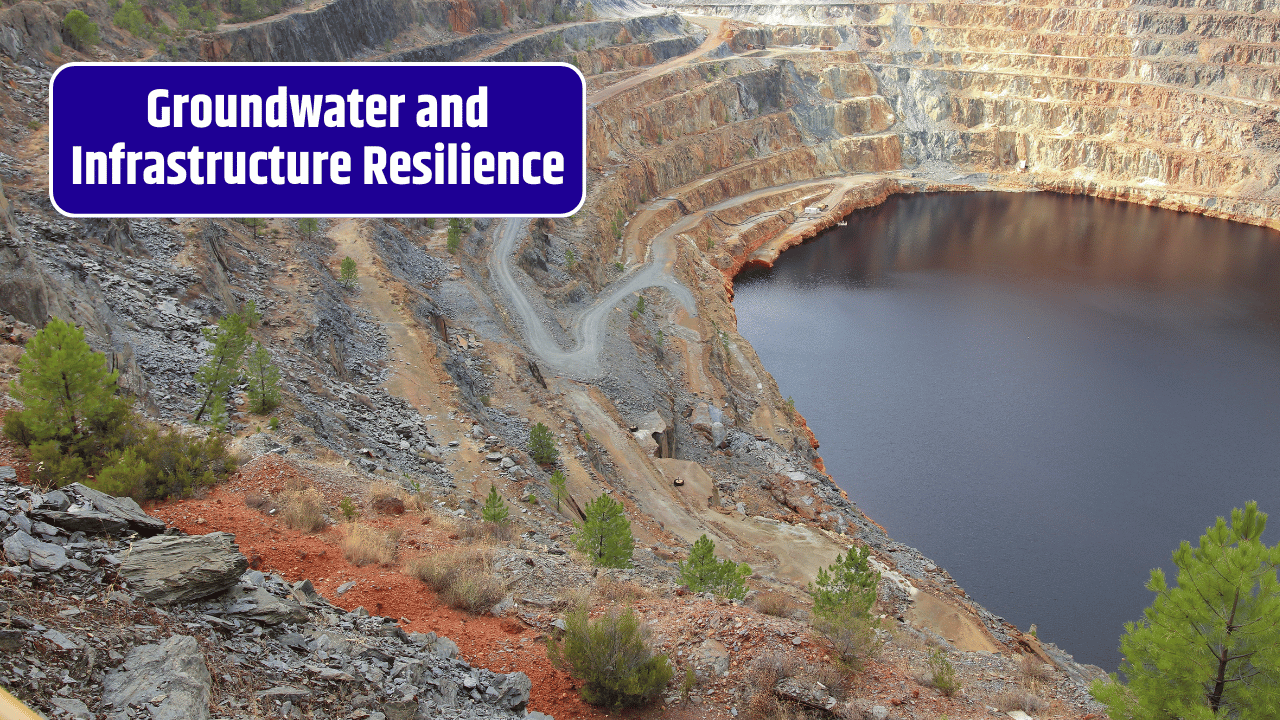Groundwater depletion is emerging as a silent crisis, threatening not only water security but also the long-term resilience of the United States’ water infrastructure. As climate change reduces surface water availability and demand increases across agricultural, industrial, and residential sectors, many regions are turning to groundwater at unsustainable rates. Without systemic reforms in water management and infrastructure planning, groundwater overuse will undermine environmental stability, economic growth, and community resilience.
Table of Contents
The Scope of Groundwater Depletion in the U.S.
Groundwater supplies nearly 40% of the U.S. public water supply and about 90% of rural water use, while also supporting more than 50% of agricultural irrigation. Yet in many states—especially in the West and Midwest—withdrawals are exceeding natural recharge rates.
Regions of Critical Concern:
- California’s Central Valley: Sinking land (subsidence) and declining aquifer levels
- High Plains (Ogallala Aquifer): Supplies 30% of U.S. irrigation water, much of it unreplenished
- Arizona and New Mexico: Aquifers at high risk from aridification and limited recharge
- Florida and Coastal Areas: Vulnerable to saltwater intrusion due to over-pumping
Consequences of Depletion:
- Declining water tables increase energy costs for pumping
- Land subsidence damages roads, pipelines, and canals
- Reduced water quality from concentration of pollutants and saltwater intrusion
- Loss of surface water as groundwater and rivers are hydrologically connected
Infrastructure Risks from Overdrawn Groundwater
Depleting groundwater isn’t just a supply problem—it’s a threat to the physical and operational integrity of water infrastructure.
| Infrastructure Element | Risk from Groundwater Depletion |
|---|---|
| Wells and Pumps | Require deeper drilling and higher energy use |
| Pipelines and Canals | Can crack or collapse due to subsidence |
| Storage and Recharge Systems | May become ineffective if aquifers collapse |
| Water Treatment Plants | Face higher pollutant loads and operational costs |
As these risks intensify, long-term infrastructure planning must shift from reactive fixes to proactive, resilient design.
Strategies for Building Groundwater-Resilient Infrastructure
1. Enhance Groundwater Monitoring and Data Systems
Accurate, real-time data is crucial for sustainable aquifer management.
- Expand aquifer mapping and metering
- Integrate satellite and sensor data to monitor depletion
- Require transparent reporting of withdrawals by all users
2. Promote Managed Aquifer Recharge (MAR)
Intentionally replenishing groundwater through engineered or natural systems can help stabilize supplies.
Methods include:
- Recharge basins
- Infiltration galleries
- Stormwater capture and injection
- Agricultural field flooding during wet seasons
3. Modernize Irrigation Infrastructure
Agriculture is the largest consumer of groundwater in the U.S. Upgrading irrigation systems can dramatically reduce withdrawals.
- Shift to drip and micro-irrigation
- Use soil moisture sensors and automated systems
- Support crop switching and drought-tolerant species
4. Integrate Surface and Groundwater Management
Water systems must be planned and operated as a connected whole. Policies and infrastructure must reflect this hydrological reality.
- Use conjunctive use strategies (e.g., use surface water in wet years, store groundwater for dry years)
- Design flexible infrastructure that adapts to fluctuating water sources
- Encourage basin-scale water planning and coordination
5. Update Legal and Regulatory Frameworks
Many states operate under outdated groundwater laws that do not reflect current climate and hydrological conditions.
- Implement or enforce sustainable yield standards
- Require groundwater sustainability plans (as in California’s SGMA)
- Support water markets and trading to promote efficient use
6. Finance Resilience-Oriented Projects
Federal and state funding must prioritize groundwater sustainability:
- Leverage EPA’s SRF programs for recharge and conservation projects
- Create incentives for demand reduction and efficiency upgrades
- Develop public-private partnerships for aquifer recharge infrastructure
Preparing for a Water-Scarce Future
Groundwater depletion is both a symptom and a driver of unsustainable water practices. Building resilience requires a shift in how we plan, finance, and manage water infrastructure—from short-term supply solutions to long-term sustainability.
Key actions for the future include:
- Embedding groundwater sustainability into infrastructure design
- Prioritizing aquifer recharge and monitoring in capital planning
- Equipping utilities with the tools to adapt to changing supplies
- Engaging communities in groundwater governance and conservation
Resilient water infrastructure must work in harmony with the natural systems it depends on. By acting now, the U.S. can avoid irreversible aquifer damage and ensure that groundwater remains a reliable pillar of national water security.
FAQs
What is groundwater depletion?
It’s the overuse of groundwater resources faster than they can naturally recharge, leading to declining water tables and long-term availability issues.
How does land subsidence affect infrastructure?
As aquifers empty, the land above can sink, causing damage to pipelines, roads, and other infrastructure.
Can groundwater be replenished?
Yes, through managed aquifer recharge projects that direct excess water back into underground aquifers during wet seasons or storm events.
Is groundwater connected to rivers and lakes?
Absolutely. Over-pumping groundwater can reduce flow to nearby surface waters, harming ecosystems and water supplies.
What’s the role of policy in groundwater resilience?
Policies can set withdrawal limits, fund recharge projects, promote efficient use, and enforce sustainable water management practices.














